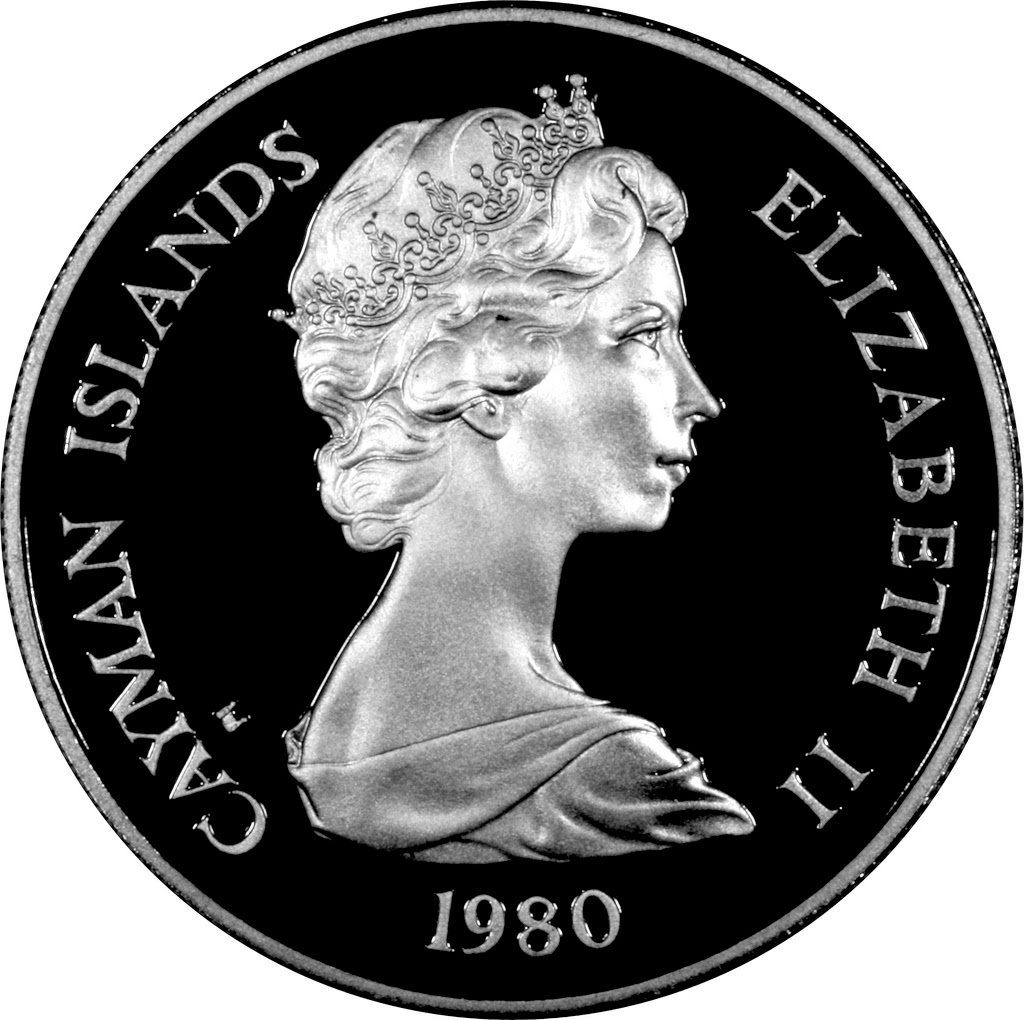Cayman Islands 25 Dollars Silver Coin 1980, Anglo-Saxon Kings of England
This silver coin depicts two Kings on its reverse: King Edward the Confessor and King Harold II.
The Kings of England Coin Collection is a unique set of ten gold and ten silver coins encompassing the 37 kings of England from the first Anglo Saxon King Edward the Confessor, to the most recent king of the House of Windsor, George VI, the father of the present reigning monarch Queen Elizabeth II. The renowned sculptor Michael Rizzello, OBE was commissioned to design this beautiful set of coins. Mr. Rizzello is internationally known for his sculpture, coin, medal and seal design for such nations as Jordan, Paraguay and Uganda and is responsible for the design of the very popular Queens of England coins previously issued by the Cayman Islands Currency Board. These coins, minted by the Royal Mint, will make an excellent gift for the collector or as a keepsake for the Millennium as they feature the likenesses of all the Kings who ruled England since 1042 AD.
King Edward the Confessor
Edward the Confessor (between 1003 and 1005 – 4 or 5 January 1066), son of Æthelred the Unready and Emma of Normandy, was one of the last Anglo-Saxon kings of England and is usually regarded as the last king of the House of Wessex, ruling from 1042 to 1066.
Edward has traditionally been seen as unworldly and pious, and his reign as notable for the disintegration of royal power in England and the advance in power of the Godwin family. His biographers, Frank Barlow and Peter Rex, dispute this, picturing him as a successful king, who was energetic, resourceful and sometimes ruthless, but whose reputation has been unfairly tarnished by the Norman conquest shortly after his death. Other historians regard this positive picture as only partly true, and not at all in the later part of his reign. In the view of Richard Mortimer, the return of the Godwins from exile in 1052 "meant the effective end of his exercise of power". The difference in his level of activity from the earlier part of his reign "implies a withdrawal from affairs".
Edward succeeded Cnut the Great's son Harthacnut, restoring the rule of the House of Wessex after the period of Danish rule since Cnut conquered England in 1016. When Edward died in 1066 he was succeeded by Harold Godwinson, who was defeated and killed in the same year by the Normans under William the Conqueror at the Battle of Hastings.
Edward is called Confessor, the name for someone believed to have lived a saintly life but who was not a martyr, in Latin S. Eduardus Confessor rex Anglorum, as opposed to S. Eduardus Martyr rex Anglorum. He was canonised in 1161 by Pope Alexander III, and is commemorated on 13 October by both the Church of England and the Roman Catholic Church in England and Wales. Saint Edward was one of the national saints of England until King Edward III adopted Saint George as patron saint in about 1350.
King Harold II
Harold II, also called Harold Godwineson or Harold Godwinson (c. 1022 – 14 October 1066), was the last Anglo-Saxon King of England. Harold reigned from 6 January 1066 until his death at the Battle of Hastings on 14 October, fighting the Norman invaders led by William the Conqueror during the Norman conquest of England. His death marked the end of Anglo-Saxon rule over England.
Harold was a powerful earl and member of a prominent Anglo-Saxon family with ties to King Cnut. Upon the death of Edward the Confessor in January 1066, the Witenagemot convened and chose Harold to succeed; he was crowned in Westminster Abbey. In late September he successfully repulsed an invasion by rival claimant Harold Hadrada of Norway, before marching his army back south to meet William the Conqueror at Hastings some two weeks later.

